Deep Blue Sea: Winning Underwater Photographs
A Spiral of Rays

This trio of spinetail devil rays (Mobula japonica) is the Best in Show winner in the 2018 Ocean Art underwater photography competition held by Underwater Photography Guide. It's also a peek into an utterly mysterious world. Very little is known about the behavior of spinetail devil rays, which can have wingspans extending up to 6.8 feet (2.1 m). But in this award-winning photograph, photographer Duncan Murrell captured two males competing for the attention of a female in Honda Bay, off Palawan in the Philippines. The photo also won first place in the Marine Life Behavior category of the 2018 Ocean Art underwater photography competition. [Read more about the underwater photo contest winners]
Tail of a Whale

Photographer François Baelen was diving near Reunion Island in the Western Indian Ocean in 2018 when he captured this otherworldly image of a mother humpback whale and her calf (top right). Baelen captured this shot using the natural light filtering down 49 feet (15 meters) under the surface. "Trust" was the word that came to mind in the moment when he swam behind the mother whale's giant tail, he wrote in a description accompanying this image. The photo took the top prize in the Ocean Art 2018 wide-angle category.
Odd Portrait

This eerie-eyed spotted ratfish normally lives in deep, frigid waters, but ventures into shallow waters in spring and fall, according to photographer Claudio Zori. Zori took this arresting portrait of the ratfish on a night dive near God's Pocket dive resort off Hurst Island, British Columbia. The image won in the portrait category of the Ocean Art 2018 underwater photo competition.
Mischievous subject
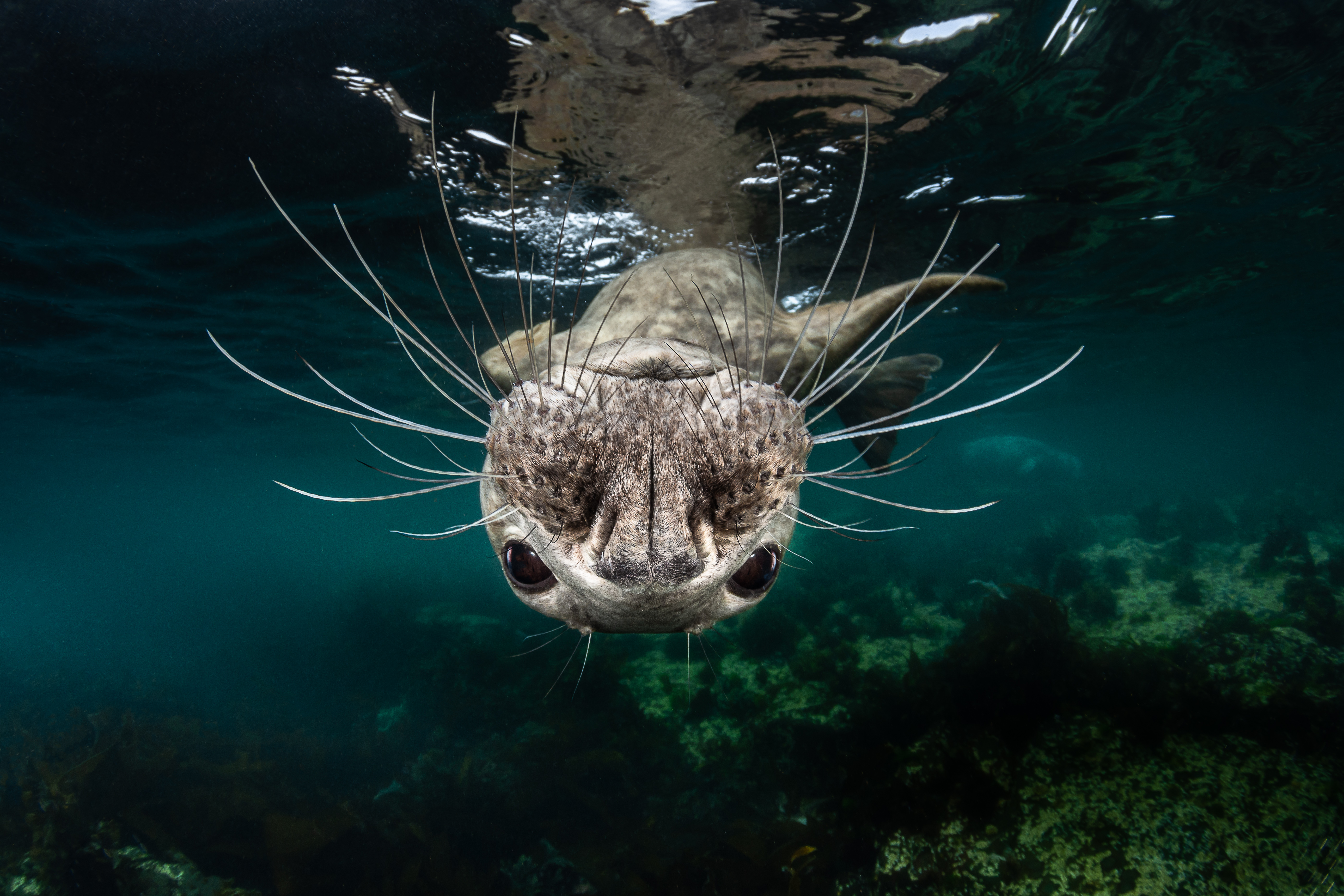
Why, hello! A curious grey seal spins upside-down in this winning photograph in the "cold water" category of the Ocean Art 2018 photo competition. Photographer Greg Lecoeur of Nice, France, captured this whimsical image. Grey seals (Halichoerus grypus) are found along coastal areas throughout the North Atlantic.
A Shot of Color
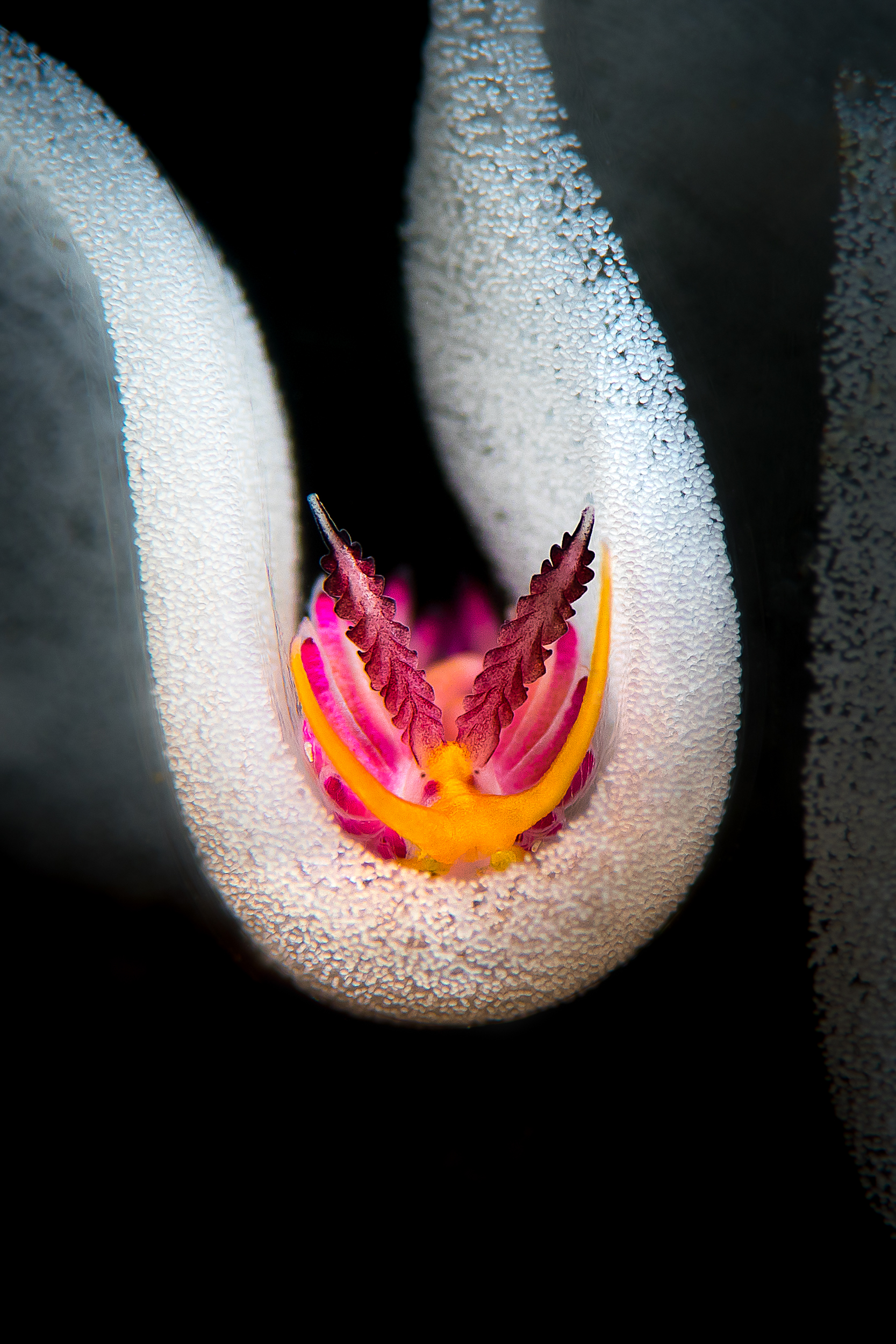
A colorful sea slug (Favorinus pacificus) perches within a hammock of its own eggs in this shot from Anilao, Philippines. Taken by photographer Flavio Vailati, this shot won first place in the "nudibranchs" category of the 2018 Ocean Art competition.
Small is Beautiful
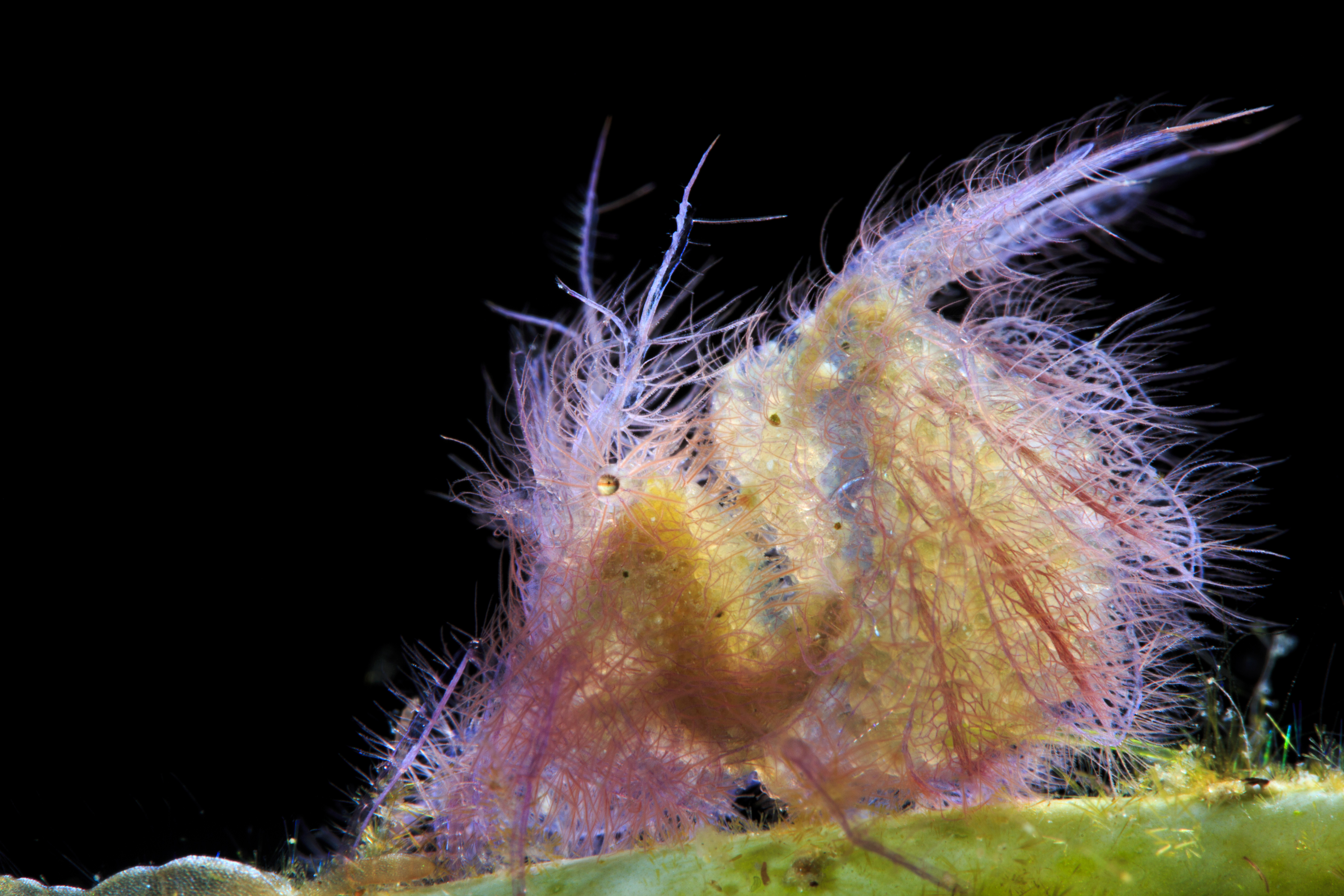
Great patience won Edison So of Kuala Lumpur, Malaysia, this shot of a miniscule hairy shrimp — and first place in the Ocean Art 2018 supermacro category. These tiny shrimp are only a few millimeters in size and typically get around by making little leaps and hops. That makes the hairy shrimp a difficult subject, So wrote in a description accompanying the photo entry.
"Great patience is needed to wait for the perfect moment to press the shutter," So wrote.
Get the world’s most fascinating discoveries delivered straight to your inbox.
Big is Beautiful, Too

A majestic manta ray seems to rear in front of a diver in this winning image from the "novice DSLR" category in the 2018 Ocean Art competition. Underwater photography newbie Alvin Cheung captured this shot near Socorro, Mexico, in 2017. Acting on the advice of a photography instructor, Cheung considered the possible backgrounds of a photograph of the giant ray, realizing that an underwater rock pinnacle and a fellow diver would provide the necessary scale.
Curious Creatures
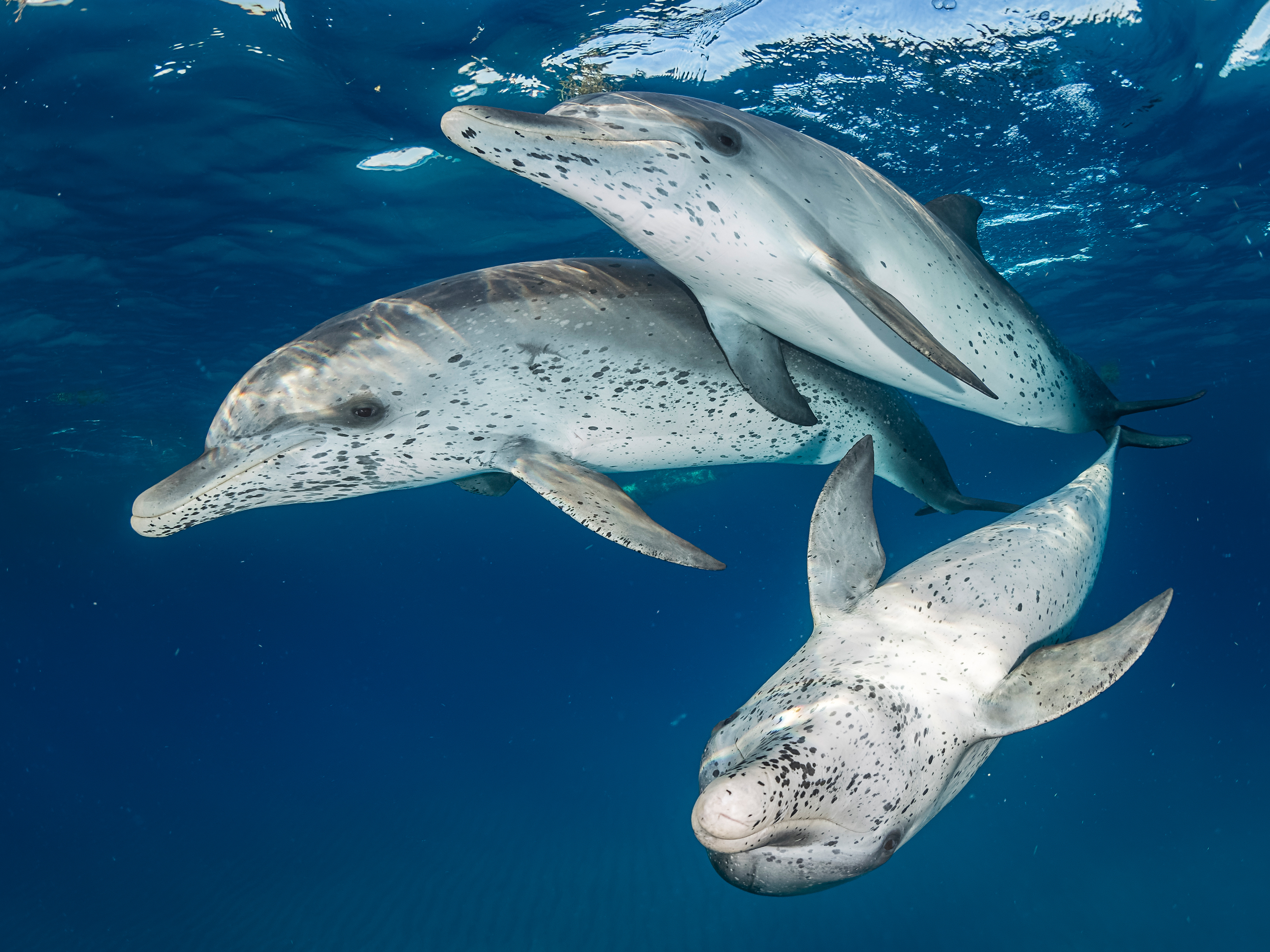
"Before you enter the water with a pod of dolphins, you never know what the interaction will be like," wrote photographer Eugene Kitsios of the Netherlands about this award-winning image. The day Kitsios captured this photograph, the interaction was friendly and curious. The Atlantic spotted dolphins swam around him playfully, and the resulting photo won Kitsios first place in the mirrorless camera wide-angle category in Ocean Art 2018.
Big-Belly Babies
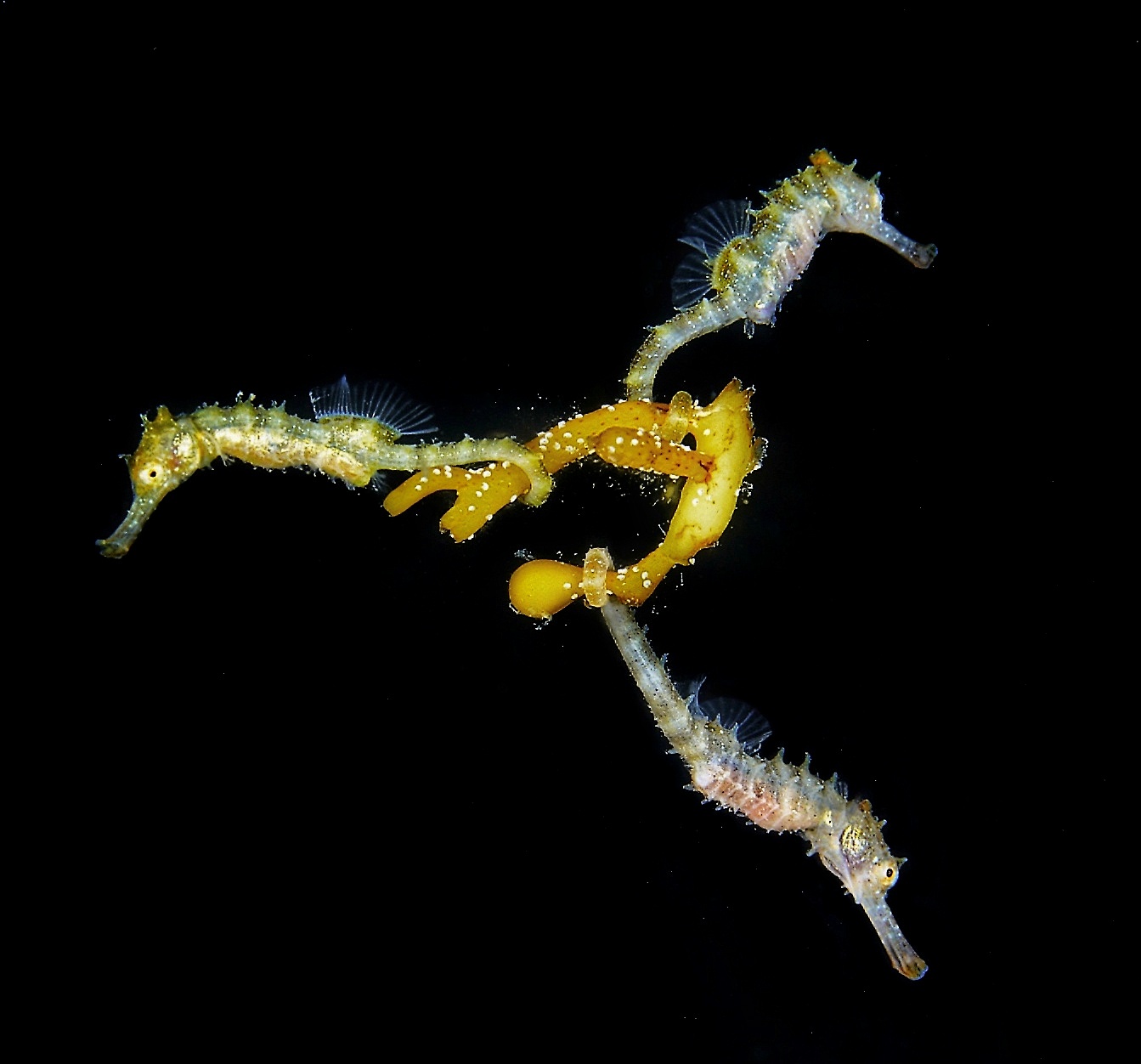
The big-bellied seahorse babies cling to a bit of seaweed near Blairgowrie Pier in Victoria, Australia. Diver Stephen Walsh spent four hours diving and photographing the tiny creatures between night shifts at his job as a firefighter, working hard to focus his lens on the less than inch-long subjects. He used a narrow aperture to keep the background dark despite the daylight filtering through the shallow water. The shot won the mirrorless macro category in the 2018 Ocean Art competition.
Jellied Beauty
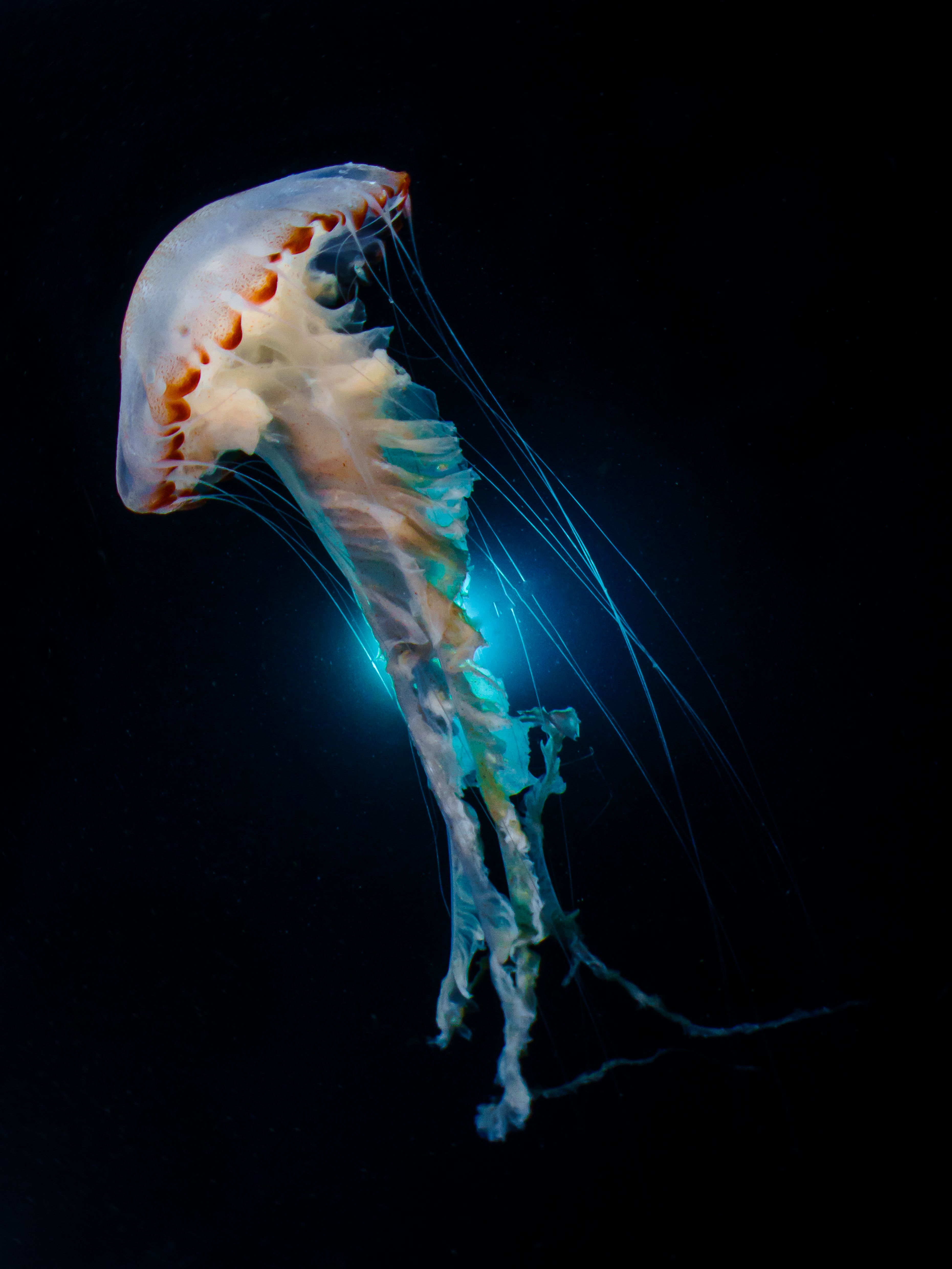
This shot, "dancing jellyfish," took top prize in the Compact Wide-Angle Ocean Art 2018 category. Taken by Melody Chuang of Taiwan near the island's northeast coast, the photo is backlit by the flashlight of Chuang's husband, who was diving with her. The night dive during summer 2018 was the first time Chuang had seen a jellyfish while diving in the area, she wrote in a caption accompanying the entry.
Parental Devotion
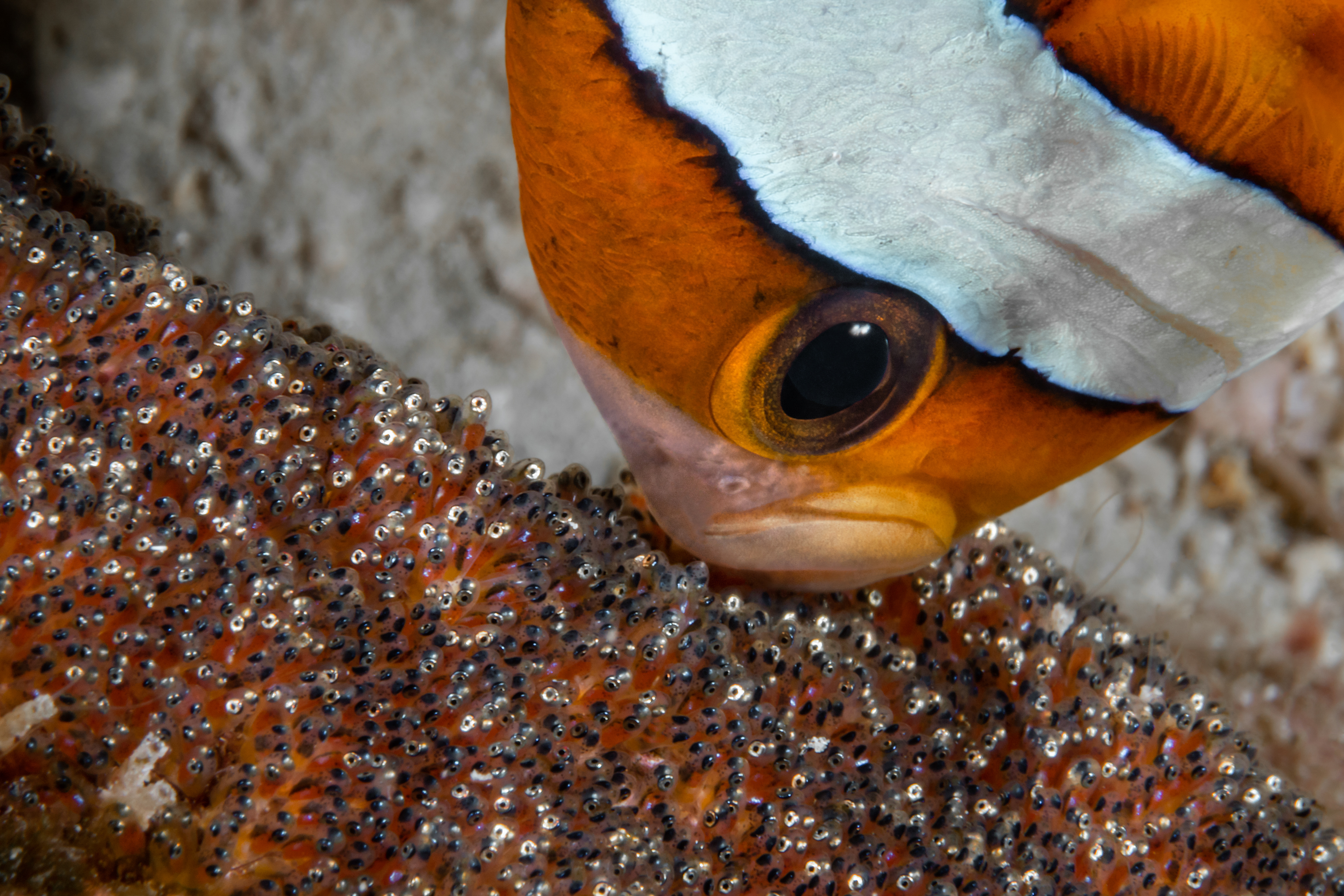
Fabrice Dudenhofer wanted to capture the care that clownfish take with their eggs. It took a half-hour of patience near Amami Oshima Island, Japan to capture this winning entry in the mirrorless behavior category in the Ocean Art 2018 competition. The constant motion of the clownfish as they oxygenated their eggs made the shot a challenge to frame, Dudenhofer wrote in a description of the image.

Stephanie Pappas is a contributing writer for Live Science, covering topics ranging from geoscience to archaeology to the human brain and behavior. She was previously a senior writer for Live Science but is now a freelancer based in Denver, Colorado, and regularly contributes to Scientific American and The Monitor, the monthly magazine of the American Psychological Association. Stephanie received a bachelor's degree in psychology from the University of South Carolina and a graduate certificate in science communication from the University of California, Santa Cruz.


